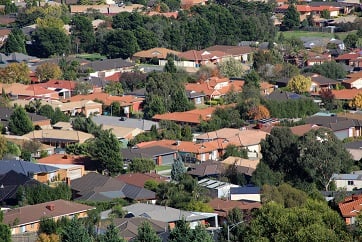California accounts for nearly half of the country's deficit from 2000-2015, study says

America saw a shortage of 7.3 million homes between the years 2000 to 2015, according to a recent study of 22 states and Washington DC.
A joint report by the Up for Growth National Coalition, ECONorthwest, and Holland Government Affairs found California had the most severe shortage, as the state accounted for nearly half (45%) of the total deficit at nearly 3.4 million units. Nevada (15.8%) and Arizona (13.4%) ranked second and third, respectively.
“The housing shortage is far more severe than originally believed, and much more widespread,” Holland Partner CEO and Up for Growth executive chair Clyde Holland said.
The report warned of several negative impacts to society if housing demand isn’t met. Apart from unsustainable rent and home prices, these include the suppression of the country’s GDP, and the displacement of individuals and families with limited incomes farther away from job centers.
“From California to Maine, the supply of housing is simply not matching its growing demand. Not building enough new housing pushes rents up, forces quality of life down, and is a significant drag on the economy, Holland said. “As this research clearly shows, these trends and the barriers to building market-rate and affordable housing are unsustainable. To achieve affordable, sustainable, and vibrant communities, we need a new approach to housing.”
The report also discussed the benefits of a “smart growth” approach to address the shortage. This involves the creation of new housing based on a formula of existing density, distance to transit stops, and the share of commuters in a given area who drive their own vehicles to work.
According to the report, a smart growth approaches uses only 25% of land required under the “more of the same” approach, where new housing based on existing patters that favor low-density, suburban sprawl. Smart growth could produce 7.3 million units by producing 10% single family homes, 61% in middle density housing such as townhomes, cottage clusters, and mid-rise buildings, and 29% in towers.
“This new report makes a strong analytic case for policies that would enable a greater volume of higher density, transit-oriented development,” said Harvard Joint Center for Housing Studies managing director Chris Herbert said. “The findings offer compelling evidence that such policies would reduce infrastructure costs and vehicle miles traveled and expand the supply of housing, helping to alleviate upward pressure on rents and home values.”
Make Room CEO Ali Solis believes the shortage has become a national problem – especially for lower-income families, millennials, and seniors – amid unsustainable rent and stagnating incomes. “We know that when a home is affordable and accessible to transit it promotes financial stability and economic mobility. … We simply need the political will to make housing a national priority and support proven smart growth policies, increased investments, and scalable solutions,” she said.



